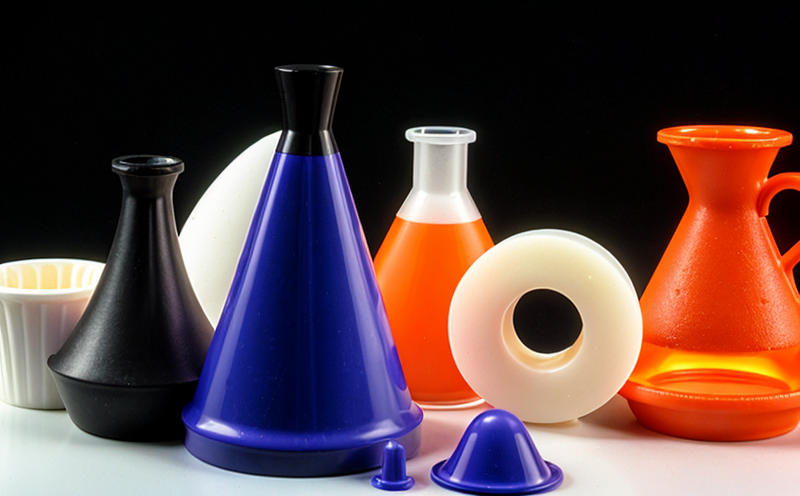Optical Brightener Testing in Polymers
The analysis of optical brighteners (OBs) in polymers is a critical process within the polymer and additive testing sector. Optical brighteners are fluorescent compounds that absorb ultraviolet (UV) light, converting it into visible blue or violet light to enhance the perceived whiteness of materials like plastics, textiles, and paper. This service is essential for ensuring product quality, compliance with industry standards, and meeting consumer expectations.
Testing optical brighteners in polymers involves a range of sophisticated techniques that can provide insights into the stability, performance, and effectiveness of these additives within various polymer matrices. The process typically begins with the selection of appropriate samples, followed by thorough preparation to ensure accurate results. Various analytical methods are used depending on the specific requirements of the client, such as UV-Vis spectroscopy, fluorescence detection, or chromatographic techniques.
One key aspect of this service is understanding the interaction between optical brighteners and polymers. The chemical structure of OBs can influence their performance in different polymer types, affecting whiteness, brightness retention, and overall product appearance over time. This requires a comprehensive approach that considers not only the presence but also the distribution and potential migration of these additives.
Accurate testing is crucial for several reasons. Firstly, it ensures that products meet regulatory requirements, such as those outlined in ISO standards like ISO 17654:2008, which specifies the method for determining the whiteness of plastic materials using a photometer. Secondly, understanding how OBs perform within polymers helps manufacturers optimize formulations to enhance product performance while minimizing environmental impacts.
Another important consideration is the stability of optical brighteners under various conditions, such as exposure to sunlight or high temperatures. This information is vital for predicting long-term performance and durability of products containing these additives. The service also includes a detailed report that provides insights into the specific properties of OBs in polymers, helping clients make informed decisions about their product development.
With a focus on precision and reliability, our laboratory utilizes state-of-the-art equipment and experienced technicians to deliver accurate results tailored to each client's needs. This expertise ensures compliance with international standards and helps maintain high-quality products across industries.
Why It Matters
The significance of optical brightener testing in polymers extends beyond mere quality assurance—it plays a pivotal role in enhancing product performance, ensuring regulatory compliance, and addressing sustainability concerns. By understanding the behavior of these additives within different polymer matrices, manufacturers can optimize their formulations to achieve desired outcomes while minimizing adverse effects.
Optical brighteners contribute significantly to improving the appearance of products by increasing whiteness and brightness. This is particularly important in industries where visual appeal is a key factor, such as textiles, packaging, and consumer goods. However, improper use or selection of these additives can lead to issues like decreased product longevity due to UV degradation or potential health risks if used improperly.
Regulatory compliance is another critical aspect. Many countries have strict guidelines regarding the use of optical brighteners in various applications. For instance, certain countries may restrict their use in food-contact materials. Ensuring that products meet these standards not only prevents legal penalties but also builds consumer trust and confidence.
Sustainability considerations are increasingly important as industries strive to reduce environmental impact. By accurately testing and optimizing the use of optical brighteners, manufacturers can minimize waste and energy consumption throughout the lifecycle of their products. This aligns with broader sustainability goals, contributing positively to environmental stewardship efforts.
Industry Applications
| Industry | Polymer Type | Optical Brightener Role |
|---|---|---|
| Textiles | Nylon, Polyester | Improves whiteness and brightness of fabrics |
| Packaging | Polyethylene (PE), Polypropylene (PP) | Enhances visual appearance and consumer appeal |
| Consumer Goods | PVC, ABS | Contributes to overall product quality and aesthetic appeal |
The application of optical brighteners in polymers is wide-ranging across various sectors. From enhancing the visual appearance of textiles to improving the performance of packaging materials, these additives play a crucial role in achieving desired outcomes. In pharmaceutical packaging, for example, they help ensure product integrity by maintaining color stability and preventing degradation.
For battery materials, optical brighteners contribute to optimizing the visual inspection process during manufacturing. This ensures that defects are easily identifiable, leading to higher quality products.
Use Cases and Application Examples
The use of optical brightener testing in polymers is particularly relevant for industries where appearance plays a significant role in consumer perception. One common application is in the textile industry, where manufacturers rely on this service to ensure that fabrics maintain their whiteness over time. Another example is in packaging materials, especially those used in food and beverage applications, where maintaining visual appeal without compromising safety or performance is essential.
A case study from the consumer goods sector involves a manufacturer of household cleaners who sought to enhance the visibility of their products on store shelves. By incorporating optical brighteners into their detergent formulas, they were able to improve the overall appearance of the product while ensuring it met strict regulatory standards.
In another instance, an electronics company utilized this service to optimize the brightness and longevity of LCD screens used in portable devices. Through precise testing and formulation adjustments, they achieved significant improvements in screen performance without affecting other critical aspects like durability or energy efficiency.





